The stopped rime pore is a high female disease caused by a specific fungus, characterized by damage to the skin and nail plate.
Pathology is considered to be common and requires correctness and most importantly, timely treatment, because the infected person is threatened without passing the treatment process.Infection spreads to large skin areas.
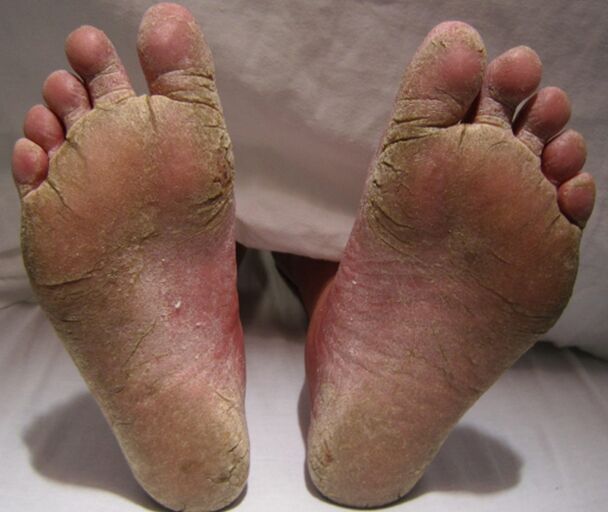
To avoid the occurrence of complications, it is important to know the appearance of the disease and its accompanying symptoms.
What is the virus on the soles of the legs?
Under the influence of conditions that are conducive to important activities, after fungal infection penetrates into the bodyWhere it is localized, the inflammation process begins.
Gradually, the characteristics of the infected person depend on the type of skin disease.These include:
- A scaly form characterized by redness and skin peeling and the appearance of cracks.There is no discomfort, which can lead to the spread of the disease.
- The dyshidrotic form focuses on a set of feet that do not touch the surface of the floor.In the focus of the lesion, small blisters were observed, with transparent contents inside and outside the foot.Immersion and erosion occur on the skin surface, itching and burning.
- A large form mainly affects the interval.The disease manifests itself in the form of peeling skin and has white edge cracks along the edge.The pathological treatment is poor and the chronic disease is very long.
- The erased form is characterized by light peeling of skin and a slight itching between fingers.This form is considered the simplest, so the disease can spread itself even without proper treatment.
How does mycomycosis manifest itself on the fingers and feet?
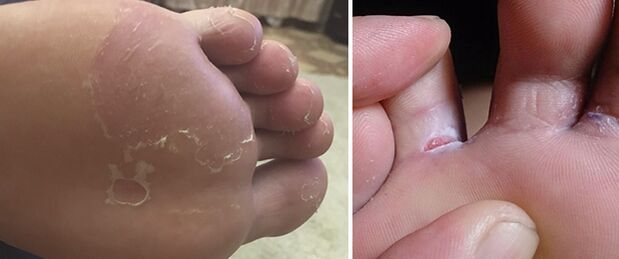
Fungal damage to the toes and feet is often used in combination with Onychomycosis - fungal damage to the nail plate.There are many clinical manifestations of this diseaseThrough it it is easy to establish pathological development.These include:
- cracks and ulcers between toes;
- peeling areas of the skin;
- The appearance of white or yellow scales;
- The emergence of the crying area;
- burning and itching;
- Thicken and change the color of the nail plate;
- Crispy and flaking nails;
- Pain around the nail plate.
Important!Most of the time, the skin turns red and traces of combing appear on it.Maybe the dead skin look between the fingers.
Symptoms and signs
The clinical picture of the adhesive at the site depends directly on the shape and stage of the fungal disease.In some cases, pathological manifestations may be expressed or vice versa, erased.It is important to identify symptoms in a timely manner so as not to complicate the process of eliminating them.
All symptoms of fungi can be divided into some form of general and specific characteristics.
Peeling
Fungi feed on protein compounds is actually the process of their lifeCompletely destroys the skin's protective layer.As a result, the skin began to peel off strongly, with many white scales appearing, which easily peeled off the skin.
Itching
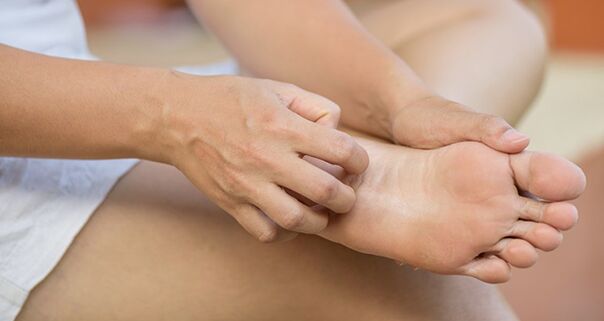
Due to violation of skin integrity and destruction, the body tries to initiate a regeneration process, which is the main reason for the uncomfortable feeling.During this time, the patient may suffer from severe itching and burns.The duration and intensity of discomfort depend on the individual characteristics of the human body.
Unpleasant smell
The development of pathological processes leads to invasion of sebaceous glands.Thus, over time, the infected sweating increases and the appearance of a specific unpleasant odor.
It should be noted that there is a group of people who are more susceptible to the development of yeast on the skin.Patients with circulatory diseases are more likely to be infection, which may be vascular disease, injury, diabetes or obesity.
Among older patients, the likelihood of picking mushrooms is much higher, because in people 50 years later, all processes in the body are suppressed and their immunity is greatly reduced.
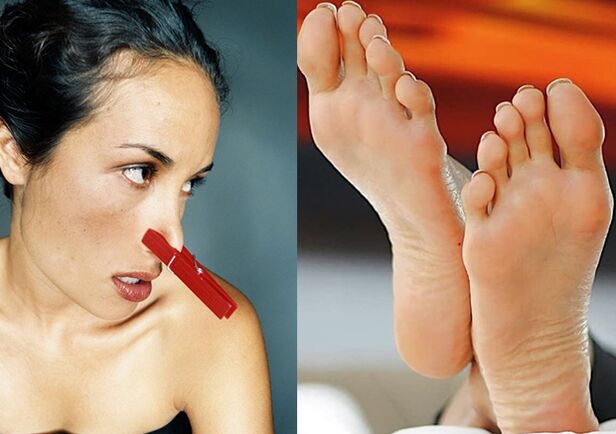
Change the color of the skin
As the fibers containing keratin are destroyed, the usual shadows of the epidermis change.Skin gets red, blue or purple tones, covered with small spots and cracks.
How to determine mycomycosis on your feet?
An infected person will be able to identify fungal lesions of the foot at the initial stage of the development of the pathological process by the presence of the following symptoms:
- Discomfort while walking;
- massive skin peeling;
- Epidermal compaction is in the focus of failure;
- A bright and unpleasant odor appears;
- Press the feeling of pain;
- The formation of small cracks;
- Itch and burn in areas affected by fungi;
- Change the color and structure of your nails.
If the pathology begins to gradually enter the advanced stage, patients may observe:
- Small red vesicles in the failure zone;
- Swelling and redness of the epidermis;
- Strong skinning and cracks across gaps;
- Continuous unbearable itching.
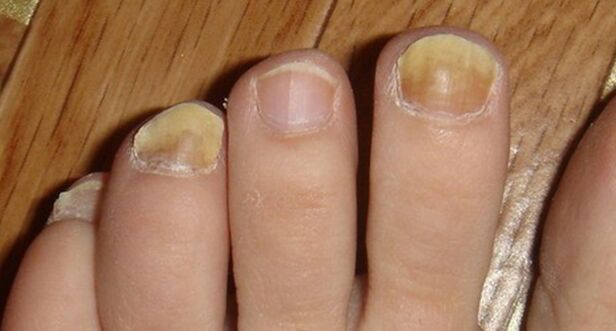
Important!When you steam your legs and hygiene procedures, the symptoms of the disease do not go away, which is one of the main signs of infection.
Do I need to consult a doctor if a fungal disease is detected in the legs?
Note the first symptom of stopping mycotic disease.You should go to a dermatologist right awayUsed for further diagnostic measures.
The doctor will perform a visual examination and test referral based on the results of an effective drug with antifungal activity.
Important!Independent prescription of drugs is unacceptable because mis-choice of drug selection can exacerbate the condition and lead to the positive development of the pathological process, thus the disease will enter an advanced stage.
Fungal lesions in the foot are not easy to get rid of, but they need to be treated correctlyThe recovery process only takes a few weeks.
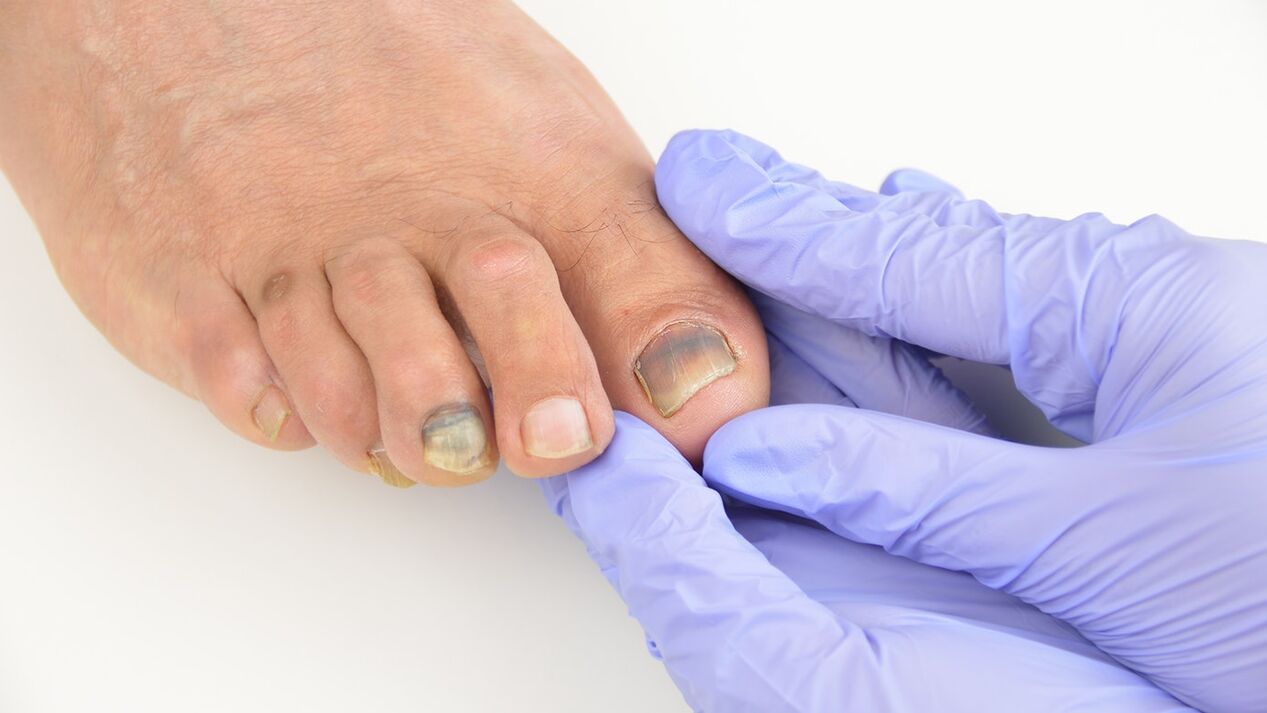
The fungal disease is accompanied by obvious symptoms, which means it will be considered a pathology at the early stages of development without allowing it to progress.
















